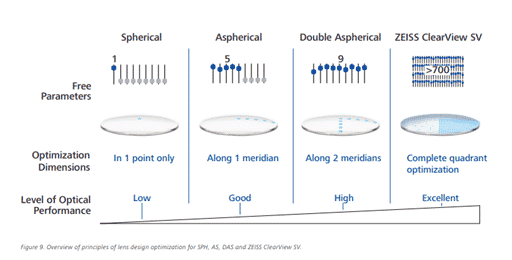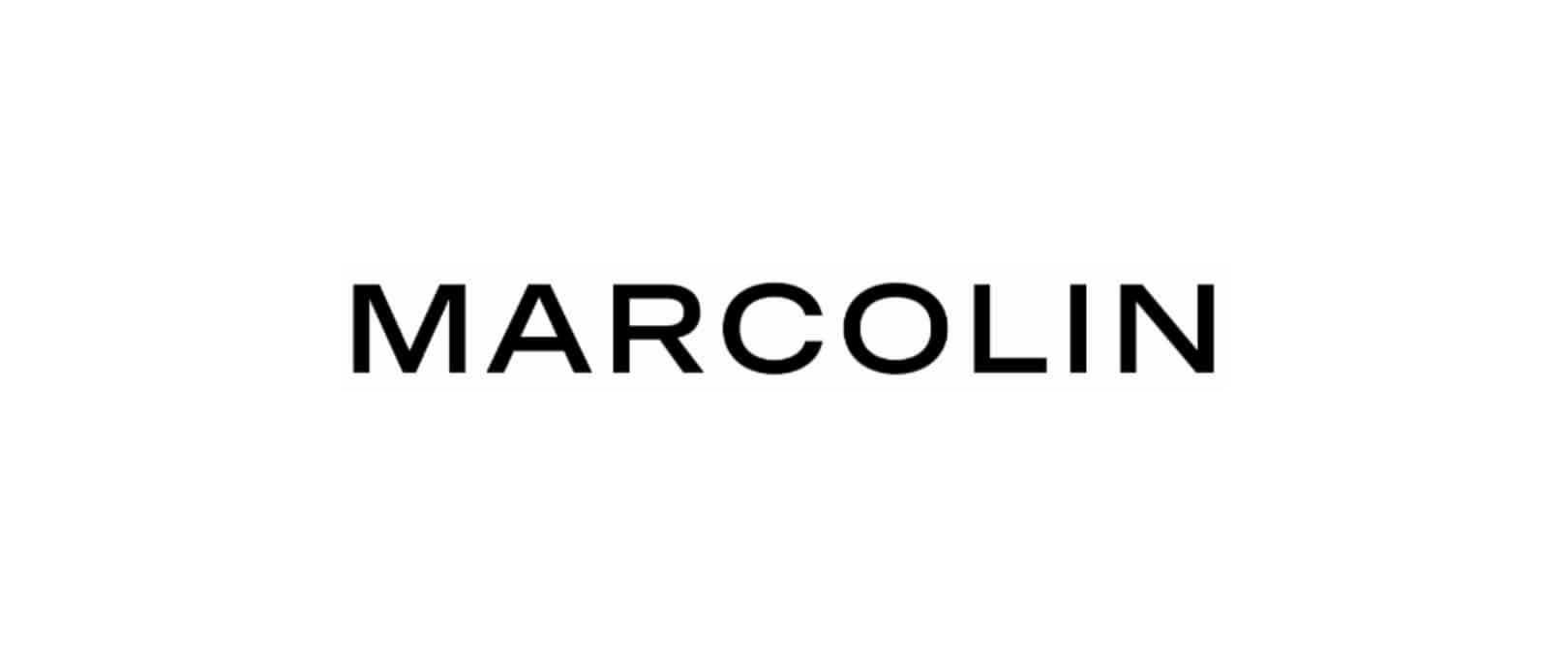Freeform Lens Design into Standard Single Vision Lenses
Tuesday, July 12 2022 | 02 h 58 min | New Products, News, Press Release
ZEISS ClearView Single Vision lenses represent a milestone in optics and aesthetics of Standard Single Vision lenses
Standard single vision (SV), whether spherical (SPH) or aspherical (AS) is the most sold ophthalmic lens type worldwide. Now ZEISS has identified a way to get many attributes of complex single vision freeform lens designs into both stock FSV lenses and standard SV surfaced lenses. The result is ZEISS ClearView Single Vision lenses. It offers high optical quality in order to provide clear vision from the lens center to the periphery and is very thin and flat at the same time.
A closer look at different single vision lens designs
To get a better understanding of this ZEISS innovation, it makes sense to take a closer look at single vision lens designs. The choice of lens design impacts the aesthetics, comfort of the lens, and optical performance. Spherical (SPH) single vision lenses, for example, are typically optimized using only one free parameter (the radii of curvature of the lens surface). Aspheric (AS) single vision lenses have a more complex shape. Typically, the lens front surface is optimized with a low number of free parameters in one meridian. Double aspherical single vision lenses are generally optimized using twice the number of free parameters. But in summary, all these lens designs do not adequately address the peripheral optics of most prescriptions.
Freeform lens design – stepping beyond spherical, aspherical, or double aspherical
In the 1990s ZEISS pioneered freeform lens design technology in surfaced lenses – which are made to order. And now it is also ZEISS that has introduced single vision freeform lens design to improve the optics and aesthetics of the SV lens category. This is possible due to a specially created freeform lens design for FSV and the new ClearForm manufacturing process that incorporates this design into the finished lens. The lens design includes point-by-point optimization with the use of around 700 free parameters across the lens. This ClearForm process utilizes the latest computer numerically controlled (CNC) generators that use special diamond cutting and polishing tools to surface the complex shaped molds for ZEISS ClearView FSV lenses. The final lens delivers, on average, a three times larger zone of excellent clear vision,[1] to provide the wearer with more clarity from the lens center to the periphery. It is therefore designed to deliver a higher level of comfort and satisfaction for the eyeglasses wearer. In addition, the complex lens shapes allow wearers to experience this vision clarity in a flatter and thinner lens than conventional SV lens designs that rely on steeper base curves to provide just acceptable optical performance. In numbers, this means: ZEISS SV ClearView lenses are on average 34 percent flatter across all prescriptions and up to 16 percent thinner compared to typical spherical single vision lenses.[2],[3]

“ZEISS is transforming the single vision market by bringing many aspects of freeform lens design to the SV lens category,” explains Bryan Rossi, the President of Zeiss Vision Care Canada. “Freeform lens design combined with the ClearForm technology used in ZEISS ClearView SV enables complex lens shapes that were previously only possible in surfaced single vision lenses. ZEISS now offers premium quality optics in finished single vision lenses, combined with fast delivery and affordable pricing to ensure everyone can access the benefits of ZEISS optics,” adds Maryam Karbalaei, the Marketing Manager of Zeiss Vision Care Canada.
To learn more, click HERE
ZEISS ClearForm is a registered trademark of Carl Zeiss Vision GmbH.
Click HERE for the press release.
This post is sponsored by Zeiss Vision Care Canada.
[1] Based on a visual clarity simulation on a 50 mm diameter lens area for 1.60 index ZEISS FSV ClearView lenses compared to 1.60 ZEISS AS FSV lenses. Average of +5 D, +3 D, +1 D, -1 D, -3 D, -5 D, and -7 D with and without a cylinder of -2 D. Quantitative analyses by Technology & Innovation, Carl Zeiss Vision GmbH, 2020.
[2] Measurements of lens flatness (base curve) on 1.60 ZEISS ClearView FSV lenses compared to ZEISS Spherical FSV lenses. Average of -5, -3, -1, +1, +3, +5 D with and without cyl -2 D. Maximum reduction of 49% of -5.00 D with and without -2 D cyl for minus lenses. Maximum reduction of 25% of 5.00 D with and without 2 D cyl for plus lenses. Quantitative analyses by Technology & Innovation, Carl Zeiss Vision GmbH, DE, 2020.
[3] Measurements of lens thickness on 1.60 ZEISS ClearView FSV lenses compared to ZEISS spherical FSV lenses over a range of prescriptions (-5, -3, -1, +1, +3, +5 D with and without cyl -2 D). Maximum reduction of 16% for center thickness of +5.00/-2.00. Quantitative analyses by Technology & Innovation, Carl Zeiss Vision GmbH, DE, 2020.








